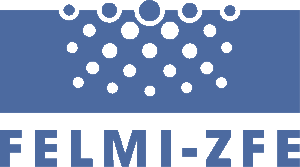Over the last decades the field of electron microscopy has improved not only with respect to higher performance such as better resolution, but also establishment of new techniques. At FELMI-ZFE we participate in method development with both via academic research as well as cooperations with manufacturers of microscopes and analytical equipment.
Methods
Materials Characterisation
Light microscopy and Optical 3-D metrology
Surface characterisation with SEM & AFM
Microanalysis using SEM and X-ray spectrometry
Materials analysis with HR-TEM
Elemental nanoanalysis with EELS and EFTEM
Atomic resolution analysis of materials with the ASTEM
Cryo-TEM for soft matter and biomaterials characterisation
Nanostructuring of materials and surfaces with FIB lab
In situ microscopy studies of dynamical processes in the ESEM
Chemical imaging with FT-infrared and Raman microscopy
Advanced 3-D micro- and nanotomography of devices and materials
Structure and crystallography of materials with XRD, EBSD, SAED and CBED
Environmental SEM
The Environmental Scanning Electron Microscope (ESEM) overcomes the restrictions of a conventional SEM. Non-conductive specimens (e.g. polymers or biological samples) can be studied, even in situ tests can be performed using special tools like a tensile stage, a heating stage or Peltier cooling mountings of different geometries. Furthermore samples can be investigated in a wet environment, allowing condensation or crystallization.
-
Pölt, P.; Zankel, A.; Gahleitner, M.; Ingolic, E.; Grein, C.: Tensile tests in the enviromental scanning electron microscope (ESEM).Part1. – in: Polymer 51 (2010) , S. 3203 – 3212
- Rattenberger, J.; Wagner, J.; Schröttner, H.; Mitsche, S.; Zankel, A.: A Method to Measure the Total Scattering Cross Section and Effective Beam Gas Path Length in a Low-Vacuum SEM. – in: Scanning (2009) 31 , S. 1 – 7
FIB
Focused Ion Beam (FIB) is a versatile tool for both sample preparation as well as for the fabrication of nanostructures. However, at FELMI-ZFE FIB related scientific research is improving the instrument and the applied techniques FIB for sample preparation as well as for nanostructuring.
-
Sezen, M.; Plank, H.; Nellen, P.; Meier, S.; Chernev, B. S.; Grogger, W.; Fisslthaler, E.; List, E.; Scherf, U.; Pölt, P.: Ion beam degradation analysis of poly(3-hexylthiophene) (P3HT): Can cryo-FIB minimize irradiation damage? . – in: Physical chemistry, chemical physics 11 (2009) , S. 5130 – 5133
- Rogers, M.; Langford, R.: In situ lift-out: Steps to improve yield and a comparison with other FIB TEM sample preparation techniques. – in: Micron (2008) 39 , S. 1325 – 1330
3D-techniques using in situ ultramicrotomy in the ESEM, X-ray imaging in the FIB and electron tomography in the TEM
While conventional electron microscop methods usually deliver two-dimensional projections of a sample 3D-methods help to gain a deeper insight into the spatial structure of a specimen. A variety of methods was developed at FELMI-ZFE for the investigation of specimens of different dimensions with according resolutions.
-
Zankel, A.; Kraus, B.; Pölt, P.; Ingolic, E.; Schaffer, M.: Ultramicrotomy in the ESEM, a versatile method for materials and life sciences. – in: Journal of microscopy (2009) 233 , S. 140 – 148
- Schaffer, M.; Wagner, J.; Schaffer, B.; Schmied, M.; Mulders, H.: Automated three-dimensional X-ray analysis using a dual-beam FIB. – in: Ultramicroscopy 107 (2007) , S. 587 – 597
Energy filtering and EELS techniques
-
Grogger, W.; Varela, M.; Ristau, R.; Schaffer, B.; Hofer, F.; Krishnan, K.: Energy-filtering transmission electron microscopy on the nanometer length scale. – in: Journal of electron spectroscopy and related phenomena 143 (2005) 1-2, S. 139 – 147
- Riegler, K.; Kothleitner, G.: EELS detection limits revisited: Ruby — a case study. – in: Ultramicroscopy 110 (2010) , S. 1004 – 1013




